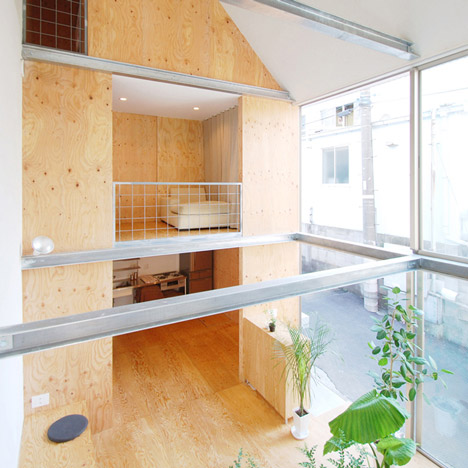
Small house in Shinjuku by Junpei Nousaku Architects
Steel crossbeams divide the triple-height living room of this Tokyo townhouse into modular sections.
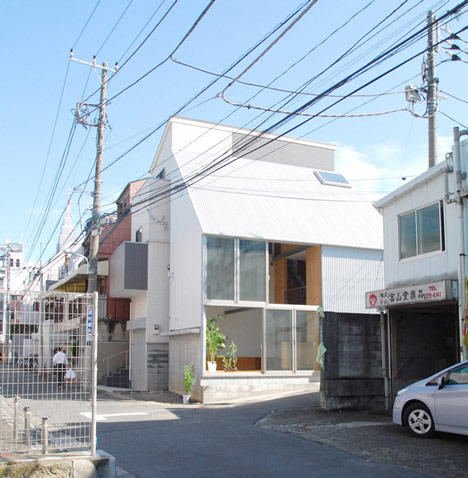
Designed by Japanese architects Junpei Nousaku, the small house in Shinjuku has a large set of windows stretched across its street-facing west elevation.
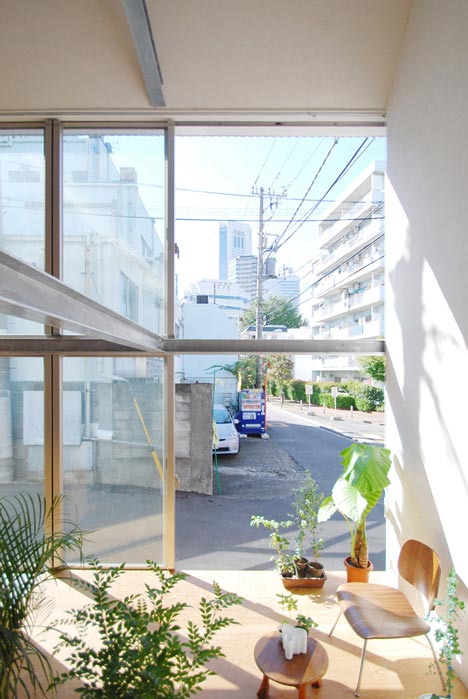
The roof pitches sharply away from this facade to create clerestory windows on the opposite wall that are a storey in height.
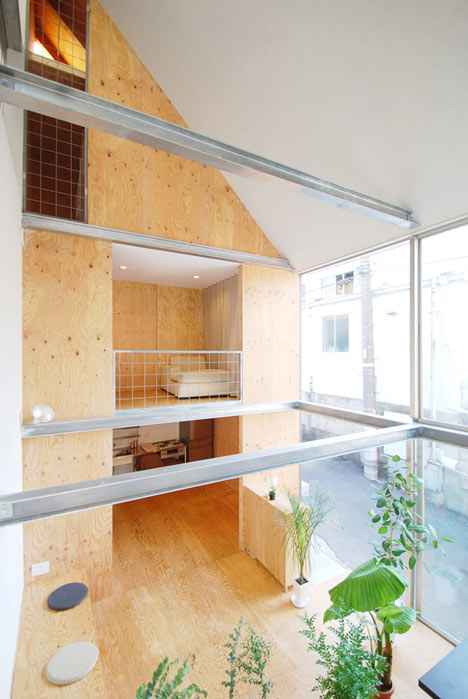
A kitchen, utilities room and bedroom are stacked up at the southern end of the house and overlook the living room like balconies.
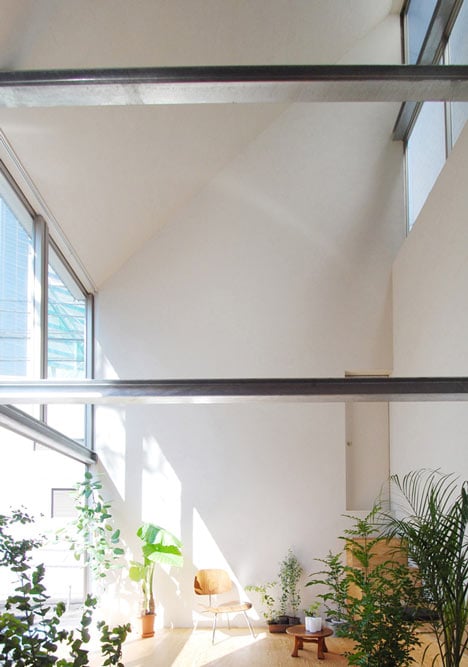
Other recent houses we've published in Tokyo include one with a secret balcony and one with a seamless frosted facade. See all our stories about Tokyo by clicking here.

The text below is from Junpei Nousaku Architects:
We all want to create as wide and open a space as possible, even in a small house. However, city housing is often very closed to the city in Tokyo’s high-density districts.
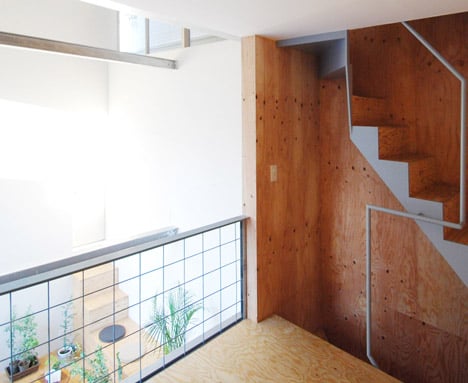
In Tokyo, real estate has been fragmented by a rapidly increasing population density. 70 years from the end of World War 2, and the small houses were built crowded. Usually in such high-density districts, the small houses occupy the site maximum, and by stacking the floor vertically, in order to ensure the living area. But the internal space becomes divided by the stacked floors, resulting in the lower floor becoming darker than the upper floor.
In addition they tend to close by the wall because of the worry about the public gaze. It is cause by the building is not enough set back from the street. So in many cases, the ground floor is assigned to the entrance, vehicle parking and closed bathroom. That makes the residential districts feel like a lifeless, deserted place to someone on the street.
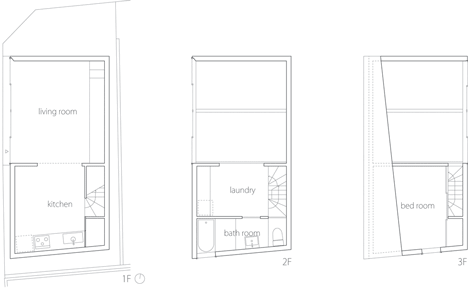
This problem is serious in Tokyo's high-density districts. Therefore, I have put the main family space, on the ground floor, and made it an open atrium-like space connecting the ground to the roof directly without enclosing the space with the floor above, resulting in a feeling of internal space beyond the scale of the housing. On the other hand, the beams run over in that space to allow for future expansion of the floor to match the change of the occupants’ life style.
In addition by taking off the majority of the exterior walls, this house becomes look like the three-story house was peeled off the floor and the walls. From behind the large windows, the occupants can expect to see various aspects of the neighborhood such as developing plant life, high-rise buildings and the occasional passer-by who has stopped to gaze at this unique and strange house.
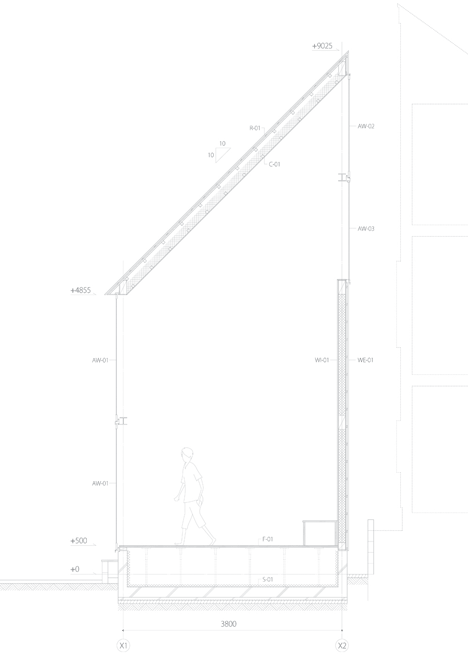
This space is not complete and not stable, rather than complete as the safe house. But I believe that direct involvement and clash with the city by this non-completion and unstable makes human life open to the city environment.